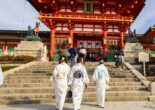It has been working since the 1964 Tokyo Olympic Games. The Tokyo Monorail was a marvel of engineering when constructed, but time has overtaken it. It is still the fastest rail connection from Haneda Airport to central Tokyo, but the location of the Tokyo terminus leaves much to be desired in terms of convenience. Read more about this must-visit for any train buff visiting Tokyo.
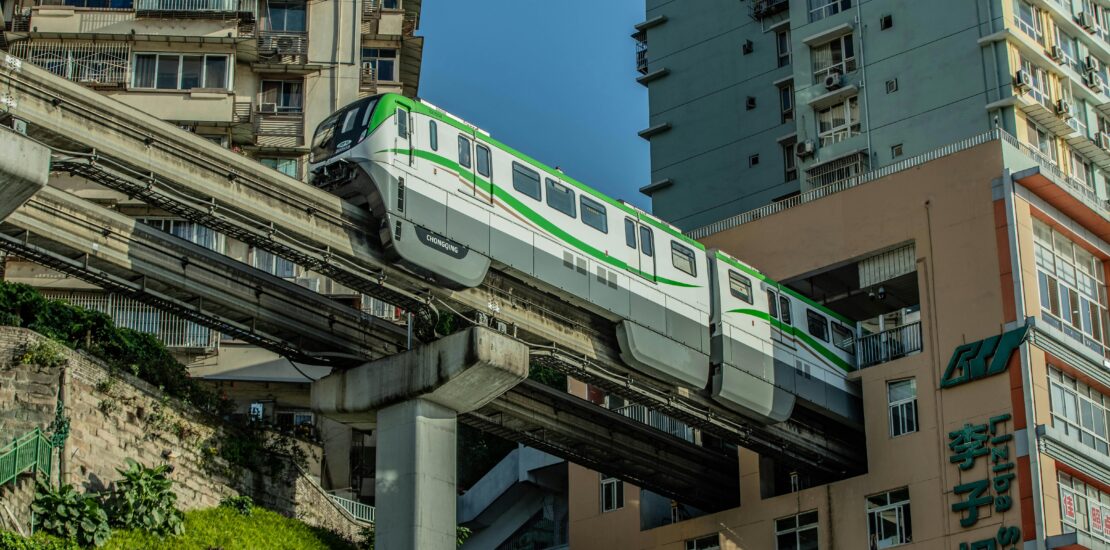
The Tokyo Monorail to Haneda Airport: A Legacy from the 1964 Olympics
When it was built, the choice of an Alweg monorail over a traditional train was daring. But Japan was working hard to show its engineering prowess to the world, and especially the visitors to the Tokyo Olympic Games — the first in Asia. Intended equally to showcase the Japanese athletic strength (judo was introduced as an Olympic sport in 1964) as a demonstration of the technology of the fastest growing economy in the world, not just recovering from the brutal bombardment and losses during WWII, but far superseding the level it had left.
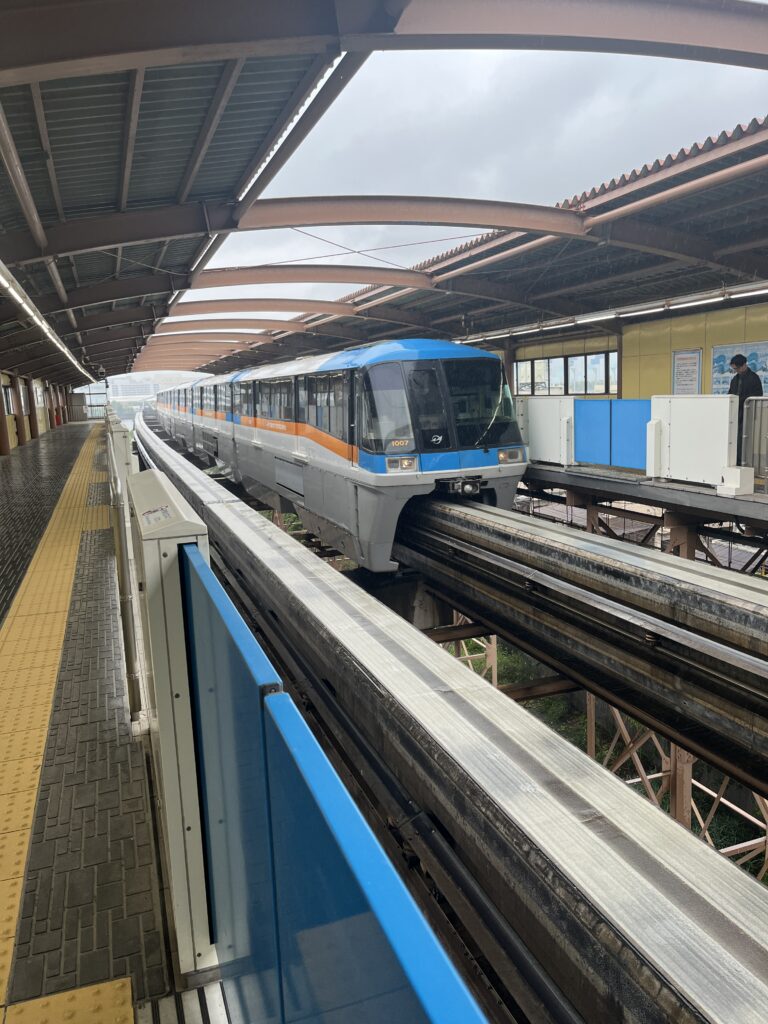
Why Haneda Airport Needed the Tokyo Monorail
Haneda Airport was the international airport where the athletes and visitors would be received. Built on an artificial island in the Tokyo Harbor, one of a string of similar islands constructed on what were mudflats in the Edo era, similar to Odaiba and Shibaura, the Haneda Airport was opened for the 1964 Olympic Games. But when Narita Airport opened, it was designed for bigger planes and international traffic. Haneda was relegated to handling domestic traffic.
Flying is Unprofitable
Even if Shinkansen has made flying to airports within 40 minutes from Tokyo unprofitable, that still leaves Kyushu, Hokkaido, and Okinawa as possible destinations. And this was sufficient until the beginning of the 21st century.
But as international traffic increased, in particular air freight, which is exclusively served from Narita, the need for more airport capacity in the Tokyo area became evident. And so the construction of a new landing strip began at Haneda, together with a new international terminal. And a new station for the Tokyo Monorail.
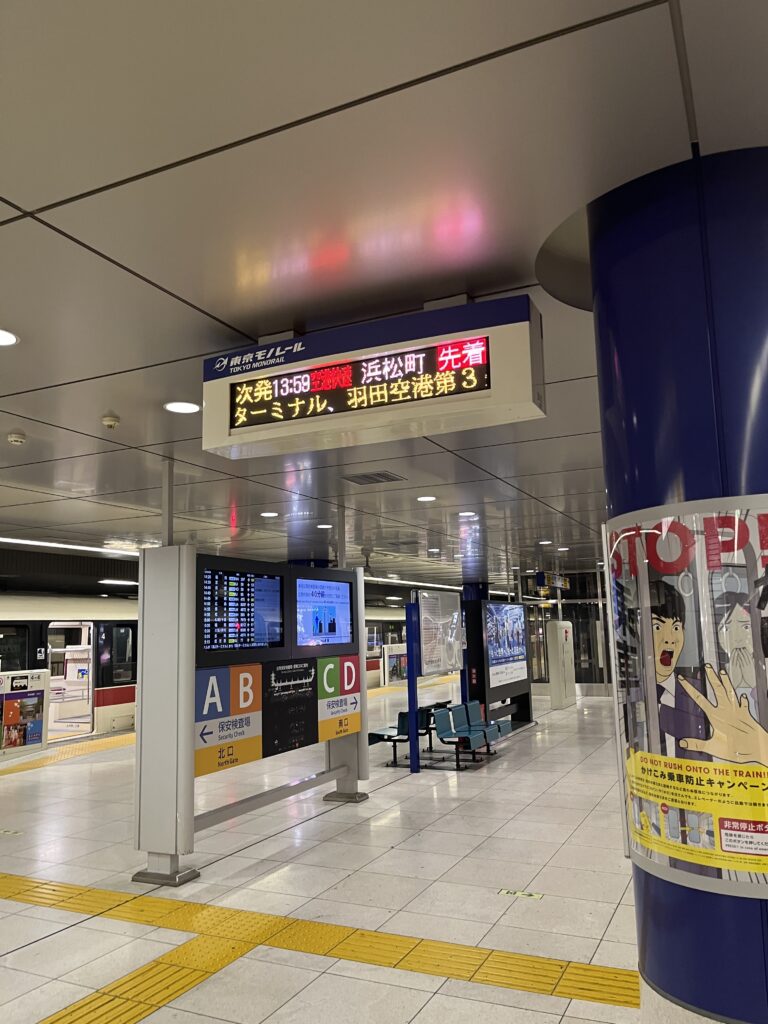
The Tokyo Monorail was constructed to take passengers from the planned travel center in Hamamatsucho to Haneda Airport, but the travel center did not happen, and travel shifted to Tokyo Station. Since the monorail is still in excellent working order, it has not been replaced, and Hamamatsucho is such a convenient location for those coming from south central Tokyo, and for those using the Oedo Line, that it has not had to be changed.
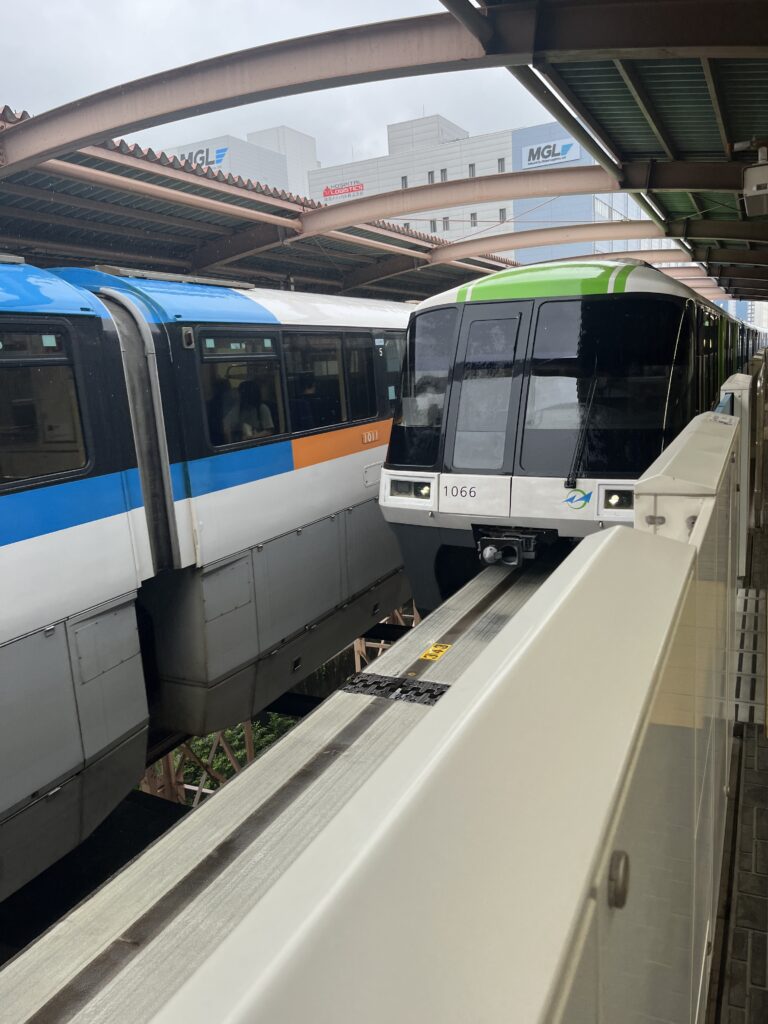
The monorail uses basically the same rolling stock and rails as in 1964, although due to the design where the car straddles a single broad rail, the wear and tear is different from that of a regular train. And while the design of the train has not changed since 1964, the rolling stock and the tracks are being constantly upgraded. The manufacturer of the equipment, Hitachi, is also behind several other monorails around Tokyo, although there is no monorail experience closer to the center of Tokyo — the nearest is in Tama, in the western suburbs, and it offers something you can not get from the Tokyo Monorail: Beautiful views of mt Fuji.
The Yamanote line also stops in Hamamatsucho, and you just need to follow the signs to get to the Tokyo Monorail, but it can be a bit of a hassle, since the station is old and the elevators were added as an afterthought.
But for those connecting to Haneda airport from Tokyo, the Asakusa line is more expedient — even if it does not pass through Tokyo Station itself, the Asakusa line runs just a few blocks away from Tokyo Station. And the main reason it is more convenient is that the Asakusa subway line connects to the Keisei line in Asakusa, and the Keikyu line in Shinagawa. This gives it the unique opportunity to offer a direct connection between Narita and Haneda airports. Before the Keikyu and Keisei lines were interconnected through the subway, the only way to get directly from Narita to Haneda was to take a bus (or a private helicopter, if you could afford that).
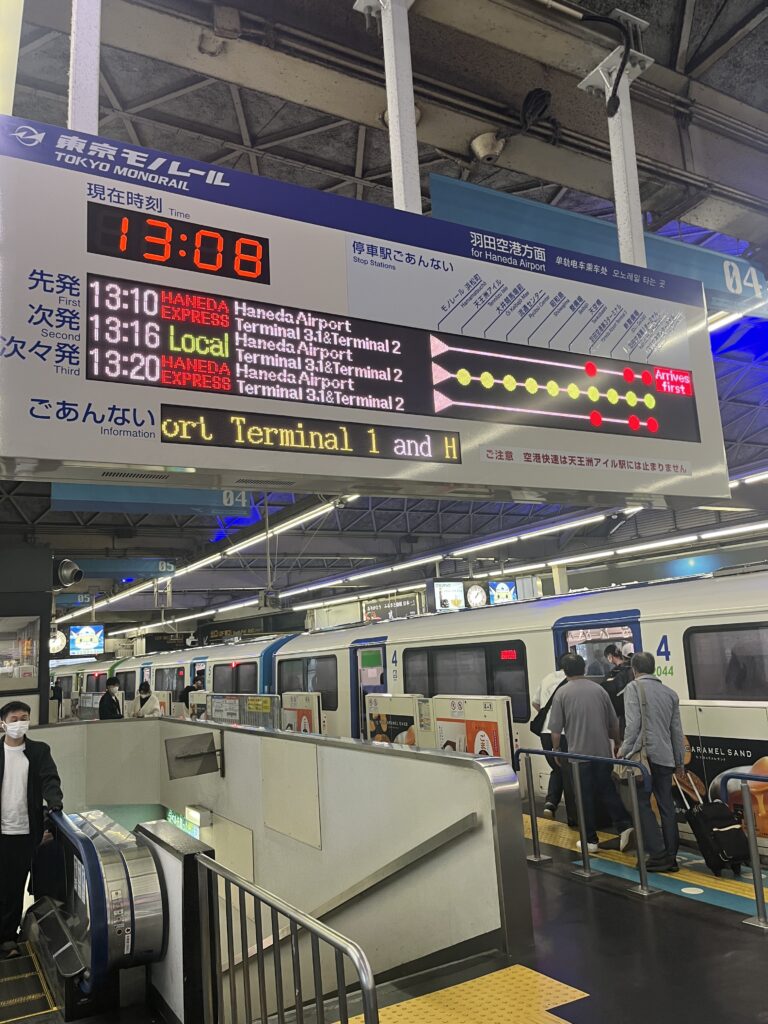
Since the Hamamatsucho station is old, the infrastructure is not as updated as in other places. There are elevators, but they were added as an afterthought. The escalator entrances and exits are very narrow, and you have to go through several passageways to get from the Yamanote line to the Tokyo Monorail. And you need a separate ticket, even though the monorail is run by JR, the same ubiquitous train company that runs most of the trains around Japan.
What to Expect When Taking the Tokyo Monorail to Haneda Airport
An advantage of that, however, is that you can use the Japan Rail Pass on the Tokyo Monorail (since it is, in reality, the JR pass).
You either have to buy a separate ticket, in the ticketing machines which look and work exactly like JR ticketing machines in other stations, or you can use your Suica card. Make sure it is properly charged, as the trip from Hamamatsucho to Haneda Airport will cost you 519 yen. It is slightly cheaper to go to the subway (Daimon station, in reality the same as Hamamatsucho but underground) and take the Asakusa subway line to Haneda. You do not have to think about changing trains, whether the train runs on the subway or Keikyu line tracks.
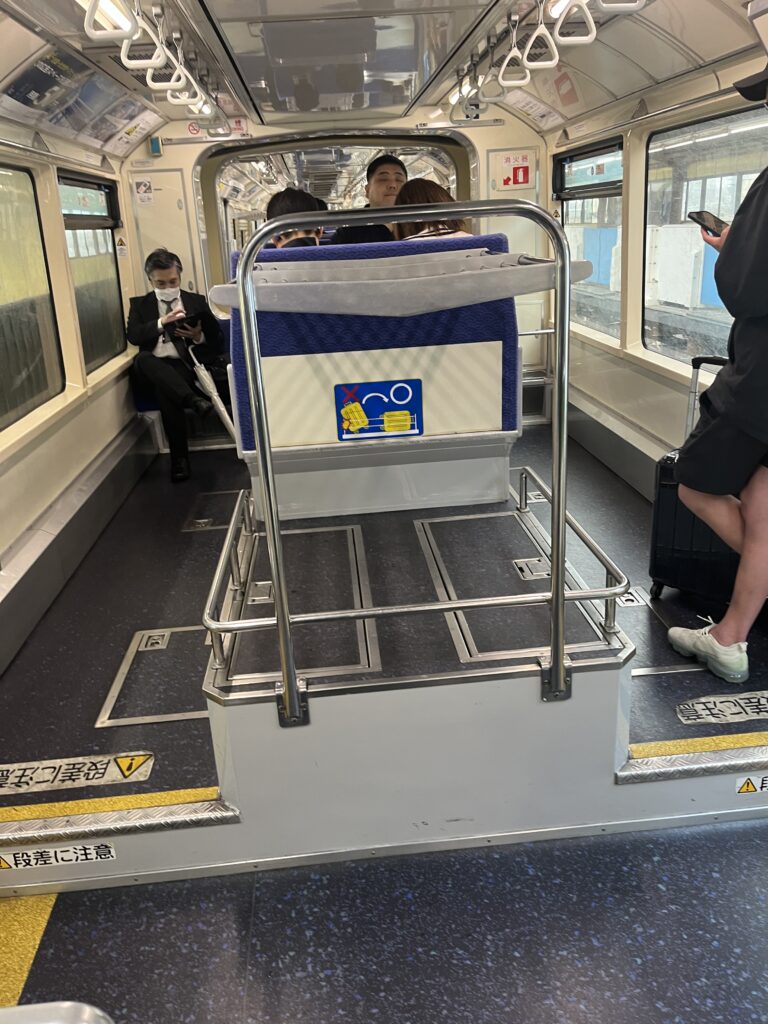
Is the Tokyo Monorail to Haneda Airport Still the Best Option?
The monorail, however, has a quirky charm you will not find in the more modern subway trains. After all, this was the airport connection for anyone flying internationally from Tokyo in 1964, which means it is hardly dimensioned for modern-day traffic. In particular, people in 1964 must have had smaller suitcases. The space for luggage on the Tokyo monorail is barely adequate even outside rush hour.
The monorail is a popular commuter train, since it passes several locations on the way to Haneda Airport, which are hard to get to using other means of travel.
Morning commuter monorail
When the Tokyo Monorail was built, the harbor islands that it passes, artificially constructed by digging canals for shipping, were still residential and rural. Now, they have turned into logistics warehouses and corporate offices, which means the intermediate stations between Haneda and Hamamatsucho serve a completely different set of customers.
And, with the general expansion of Tokyo since 1964, there are many more of them. Which means it makes sense to avoid the Tokyo Monorail for any travel in the morning between about 8 AM and 10 AM. And either way, it makes sense to take the express line. While stopping at every station may offer a more scenic view of the former mudflats, it will cost you 15–20 minutes, and the view is hardly worth it.
Stay tuned for more exciting content like this! Follow us on our social media platforms and check out our blog regularly to stay updated on the latest news, trends, and insider stories from Japan. Don’t miss out on future updates—sign up for our newsletter for exclusive content delivered straight to your inbox!
Related Articles
Warning: Undefined array key "sfsi_threadsIcon_order" in /home/veremosglobal/tokyoroomfinder.com/public_html/blog/wp-content/plugins/ultimate-social-media-icons/libs/controllers/sfsi_frontpopUp.php on line 165
Warning: Undefined array key "sfsi_blueskyIcon_order" in /home/veremosglobal/tokyoroomfinder.com/public_html/blog/wp-content/plugins/ultimate-social-media-icons/libs/controllers/sfsi_frontpopUp.php on line 170
Warning: Undefined array key "sfsi_bluesky_display" in /home/veremosglobal/tokyoroomfinder.com/public_html/blog/wp-content/plugins/ultimate-social-media-icons/libs/controllers/sfsi_frontpopUp.php on line 266

